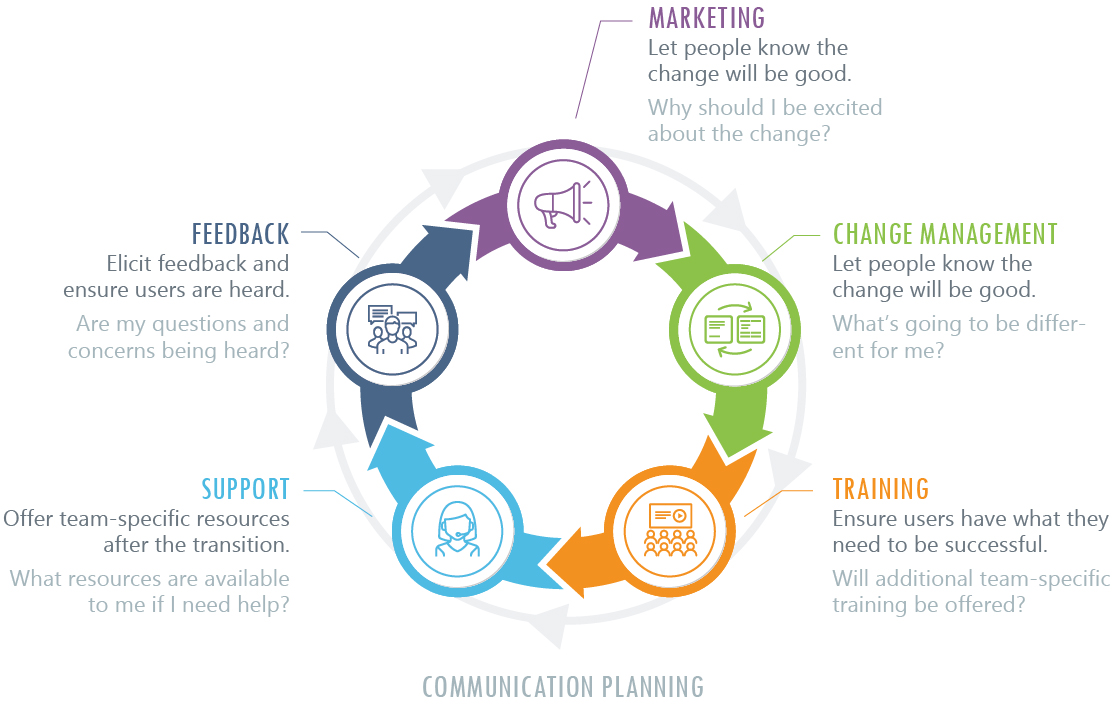Creating a Culture of Change: The 5 Principles of User Enablement
Creating a Culture of Change: The 5 Principles of User Enablement
Thanks to advancements in new technology, the business landscape is evolving faster than ever before. The acceleration of innovation is creating new and exciting opportunities to change both what we’re working on, as well as how we get work done. On the flip side, the constant assessment and implementation of new technology in the workplace has become a challenge for many organizations to maintain. Those that are not able to keep up with rapid change are finding it’s not only a point of frustration but a serious threat to the survival of their business.
In my experience, business executives and IT leaders now recognize the importance of continual change brought on by new technology, but many are slow to reevaluate their change management strategies to reflect the business realities of today. We’ve talked a lot about building modern frameworks around selecting the right technology and aligning technology to business goals. But often what’s missing in these plans is perhaps the most critical component of all – the people.
Technology may be what drives change, but the success of change ultimately depends on whether or not the people embrace it or resist it. Of course, there is one major problem with this – people inherently don’t like change.
Creating a Culture of Change
To help overcome the conflicting forces between the need for change and the users’ inherent resistance to it, BDO Digital developed the Five Principles of User Enablement to help organizations foster a culture of continual change.
The Five Principles of User Enablement

Marketing: Let people know that change will be good by leveraging creative marketing techniques to build anticipation and excitement around a new rollout. Consider all vehicles of communication, including digital TV posters, intranets, banners, desk drops, branded tchotchkes, etc.
Change Management: People often resist change due to a fear of the unknown; they’re worried about losing autonomy over their work; they feel ambushed or frustrated at being left out; perhaps they’re worried their skills will become obsolete. As you lead your organization through change, managing the roll out is extremely important to alleviating people’s fears, building confidence in your decisions along the way, and ultimately moving people through resistance to ultimately becoming champions of change.
Training: Most workforces are made up of a wide range of tech-savviness with varying degrees of willingness to embrace change. I’ve met with people who have spent their entire careers on the “green screen” (AS400) applications and don’t know how to use a mouse to copy and paste, and I’ve met with millennials who are so accustomed to touchscreens, they don’t know they can use the arrow keys on the keyboard to move an object. In short, user enablement training is for everyone. Business leaders will most likely need to incorporate a range of techniques, from videos to classroom lessons to personal training to meet each individual’s needs. A one-and-done “stock” training session will rarely address the needs of today’s dynamic workforce.
Support: Today’s users expect their IT service desks to deliver a high degree of personalization, speed, and convenience. Make sure people know who they can go to when questions or issues arise and where to escalate their problem. If you’re working with an internal service desk, make sure they’re prepared with a knowledgebase of support scripts to help them do their job. If you’re working with an external IT service provider, make sure you’ve selected a partner who can provide the high-level of support required for the digital workplace. When you enable your service desk, you enable your users.
Feedback: One of the best ways to build support from the entire organization is to empower everyone to have a voice throughout the transition. Anonymous polls and surveys are one way to empower your people to speak up. Ask them how they feel the rollout went. Did they feel their questions and concerns were being heard? And what could have been communicated better? Once you’ve collected the feedback, don’t stop there. Be sure to incorporate what you’ve learned into the next rollout to improve user satisfaction and accelerate adoption the next time around.
While technology is becoming a powerful force in the workplace, people remain the single most important piece to business success. If you’re interested in learning more about our approach to organizational change management and how to influence user enablement within your organization, contact us to discuss your specific requirements needs.

SHARE